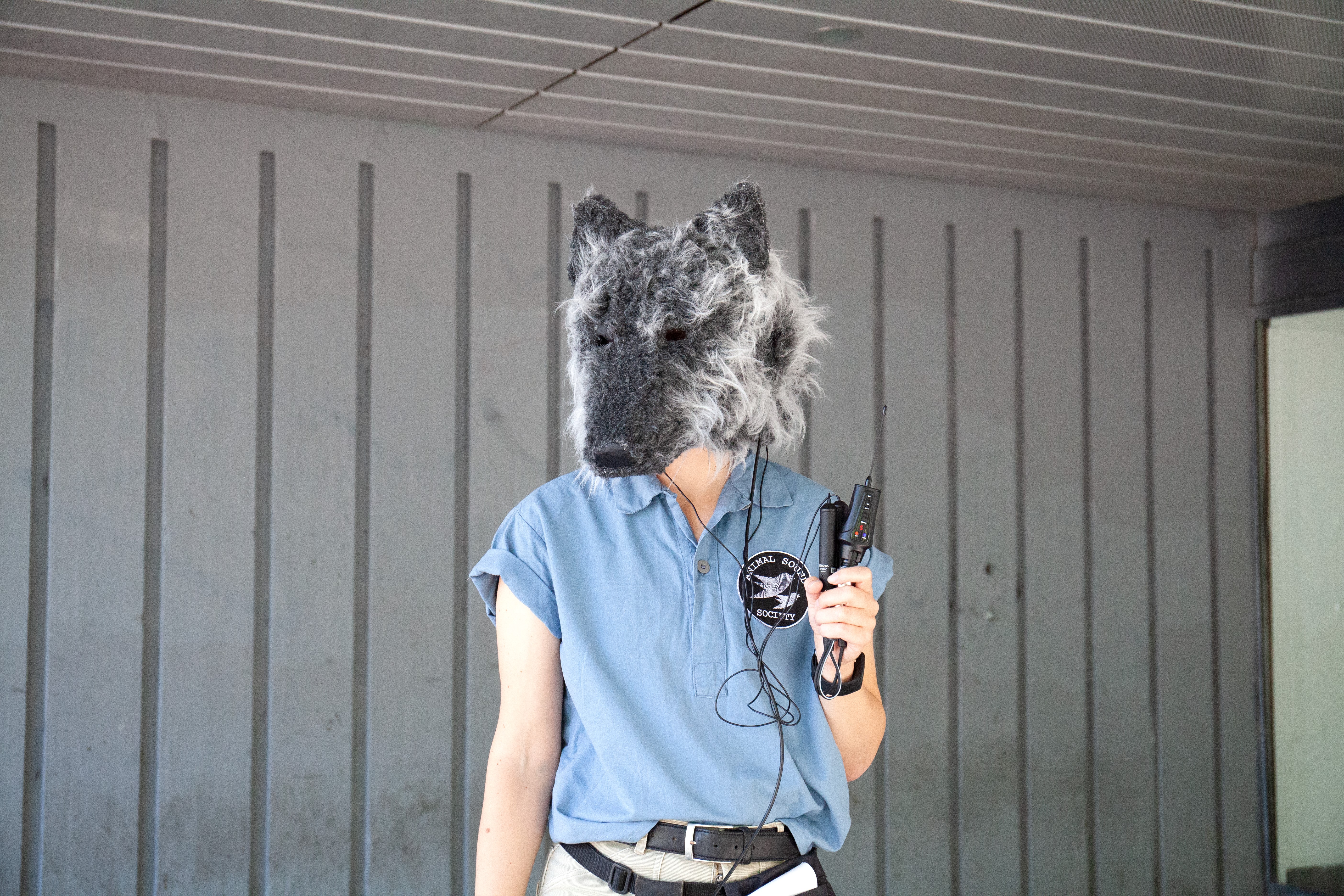

Empathy is about imagining the subjective experience of another. We have to imagine because we can never really know. But Karl wants to know! He wants to observe from the inside, listening through the ears of a wolf.
I fantasize about becoming Karl. I read his publications, appropriate his language. I recorded everything he said to me during our meeting, taking notes about his mannerism and attitude. Then I transcribed the recordings to text, and refined it into scripts for monologues that I use in performances.
Karl holds the head of a wolf in his hands. You want to pet the fur, but he abruptly turns it upside down. It is hollow.
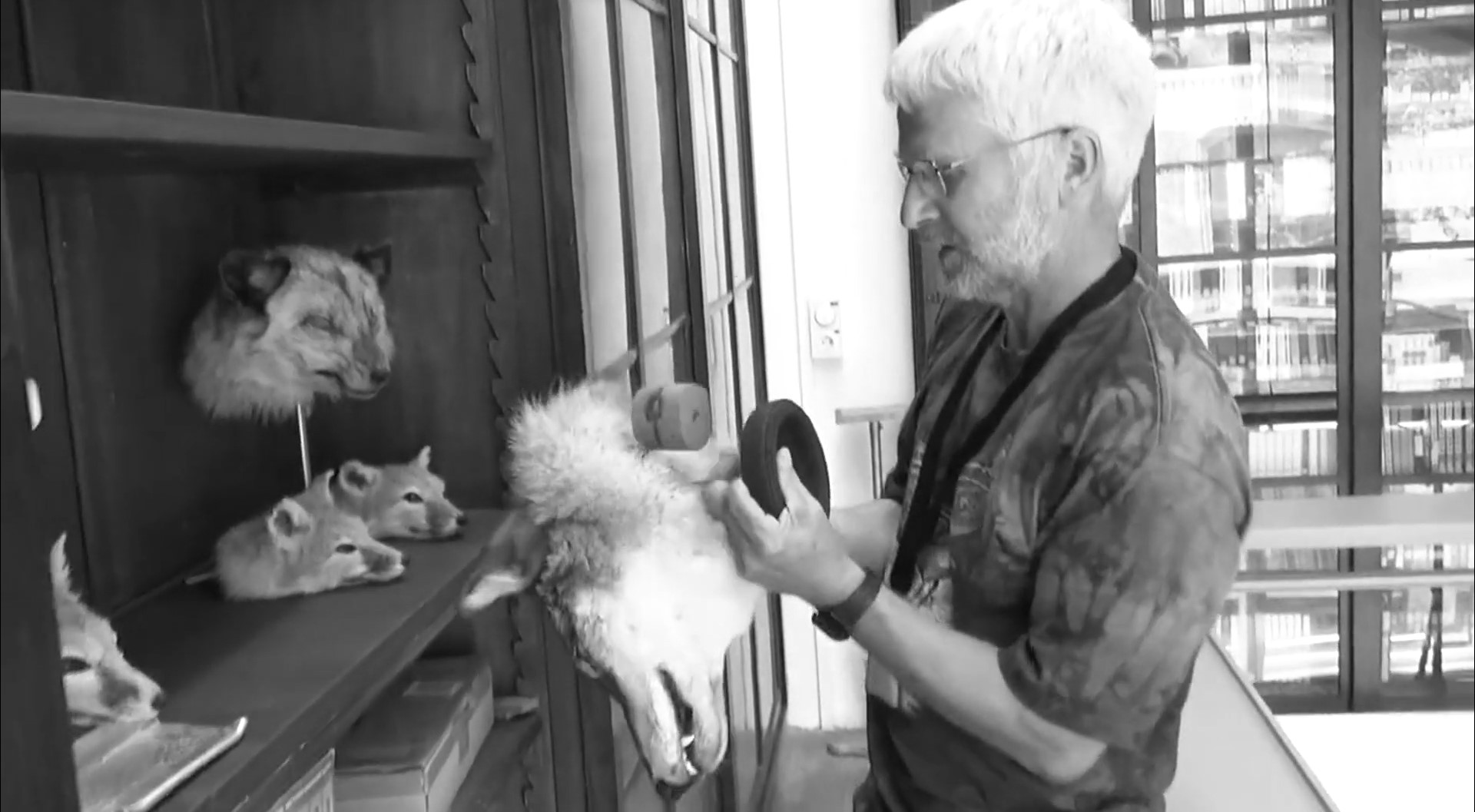

You can look inside, he says. His finger reaches into the depth of the ear, pressing towards where the tympanic membranes have been replaced by tiny microphones.
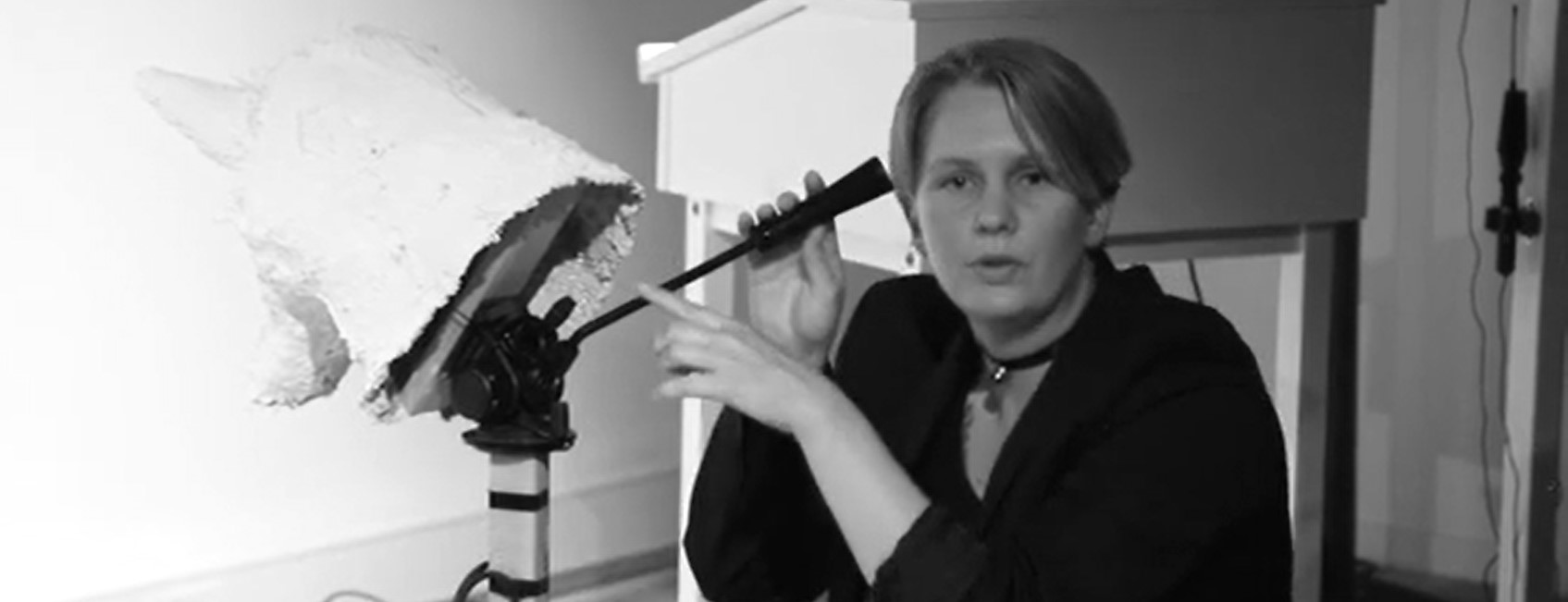
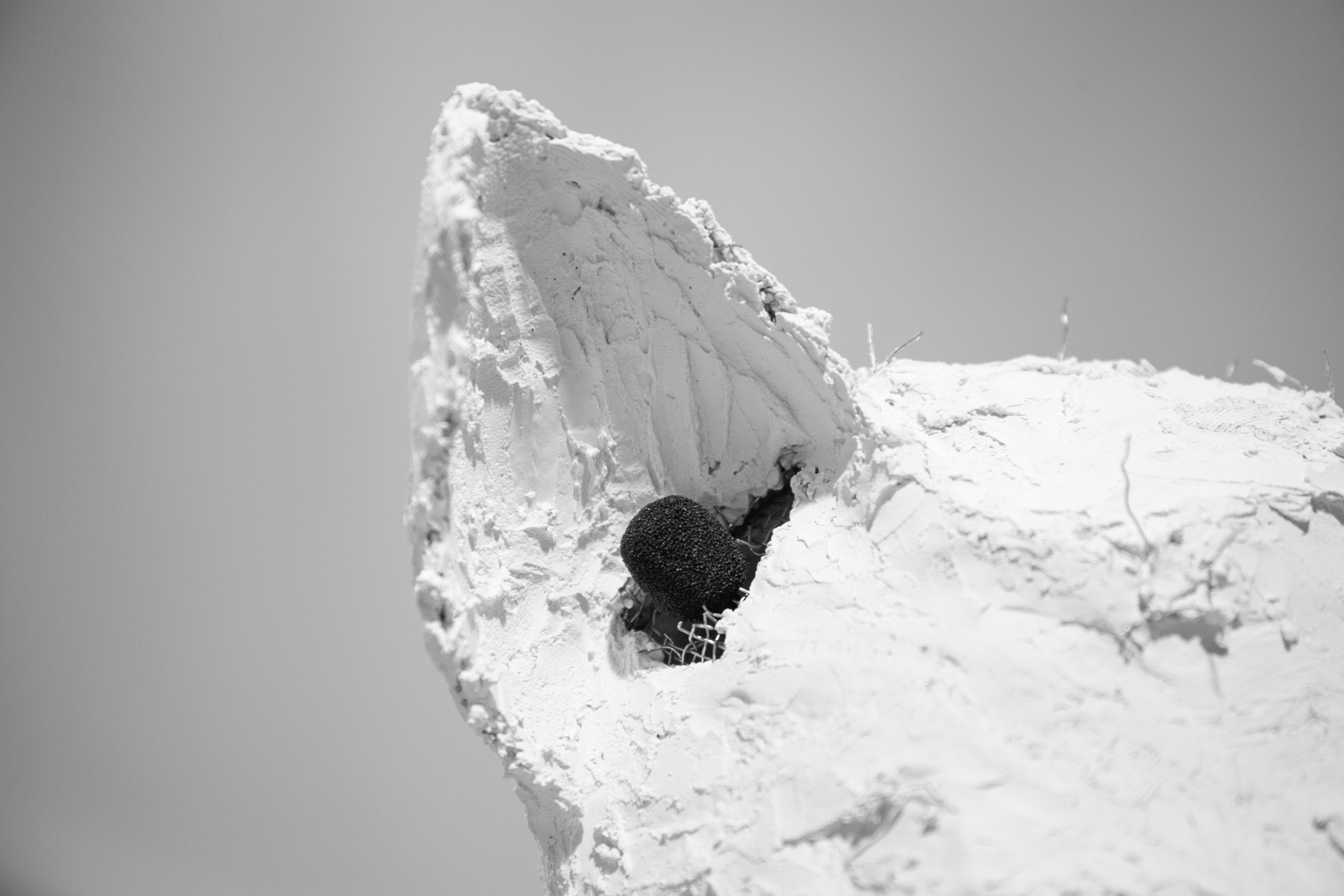
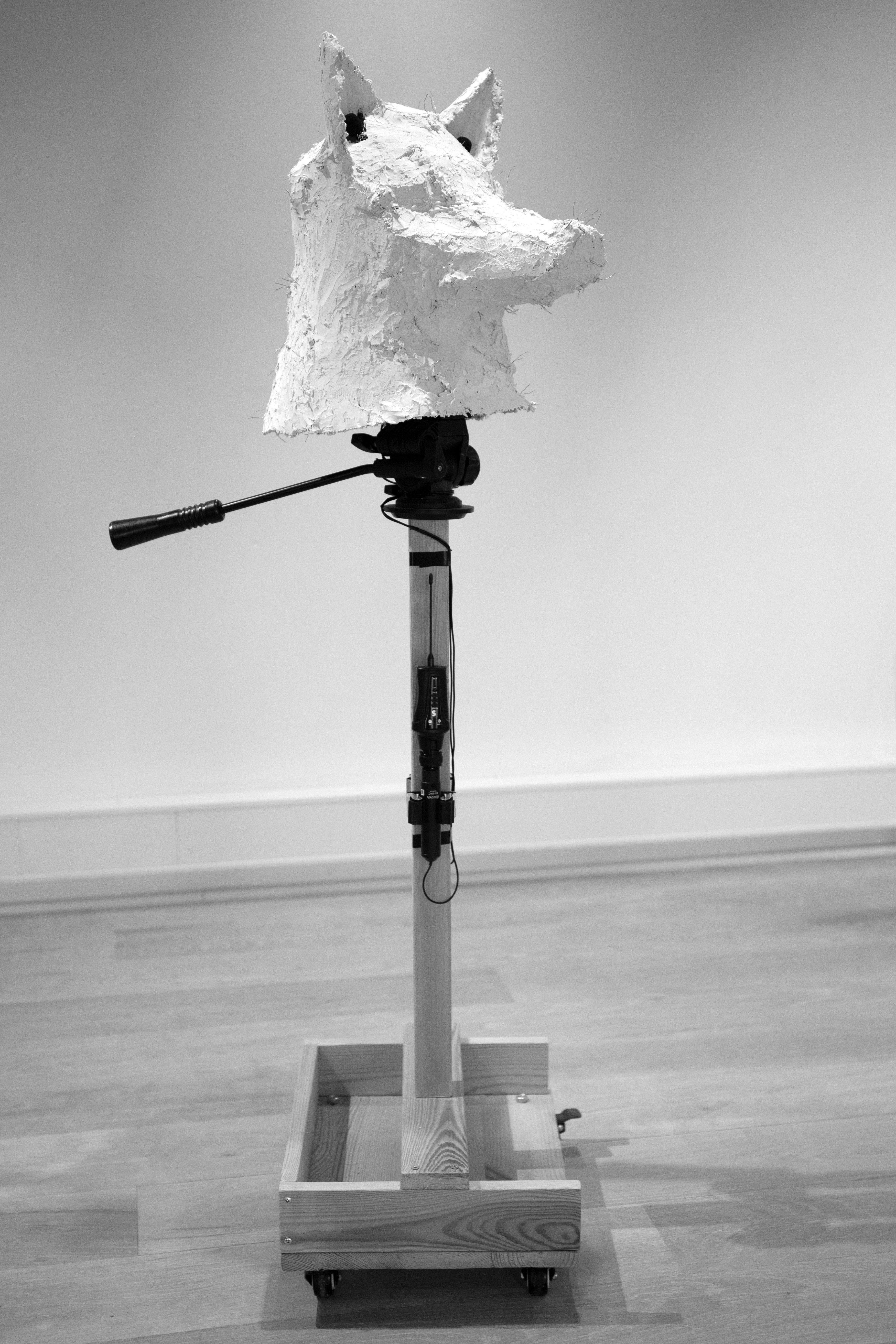
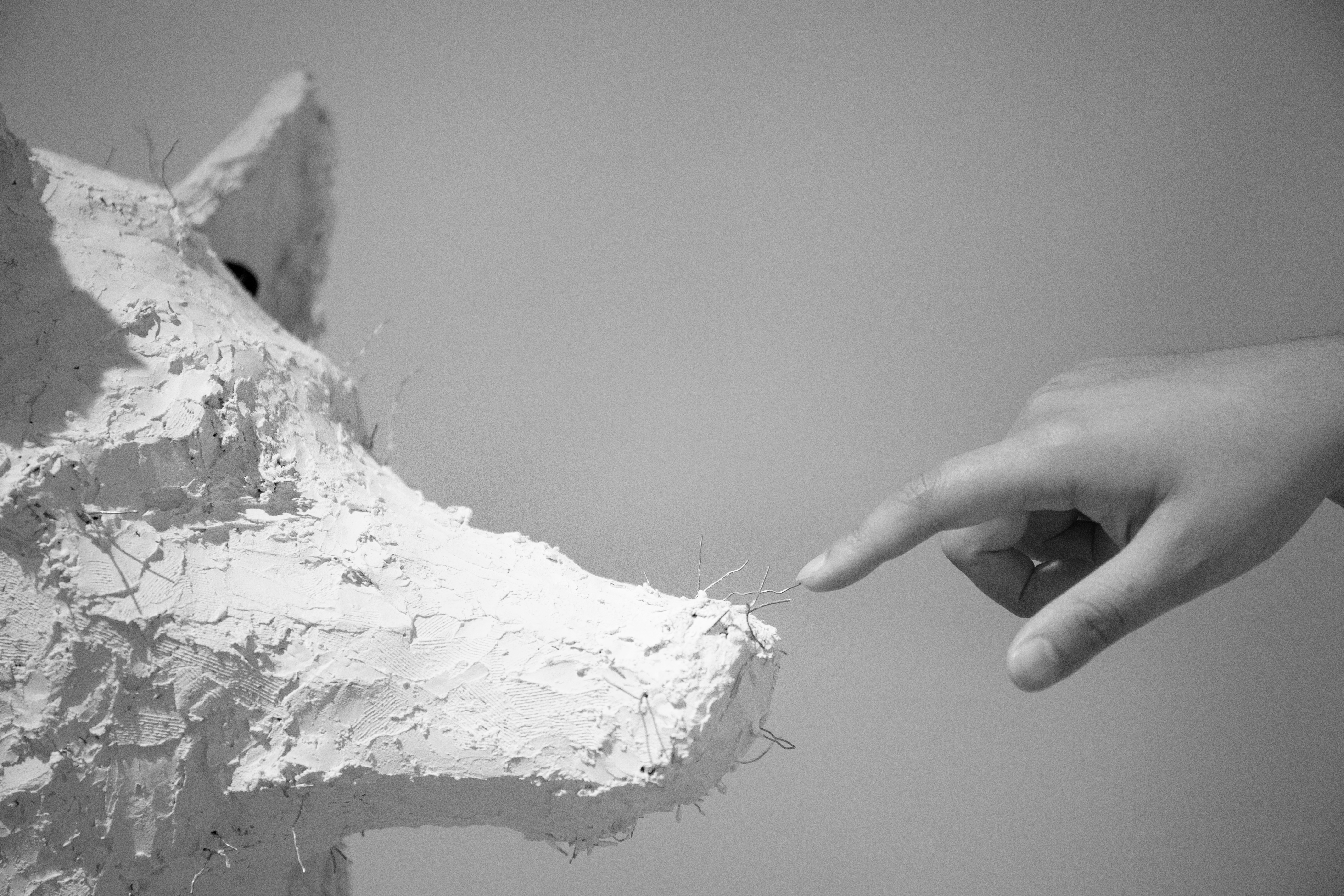
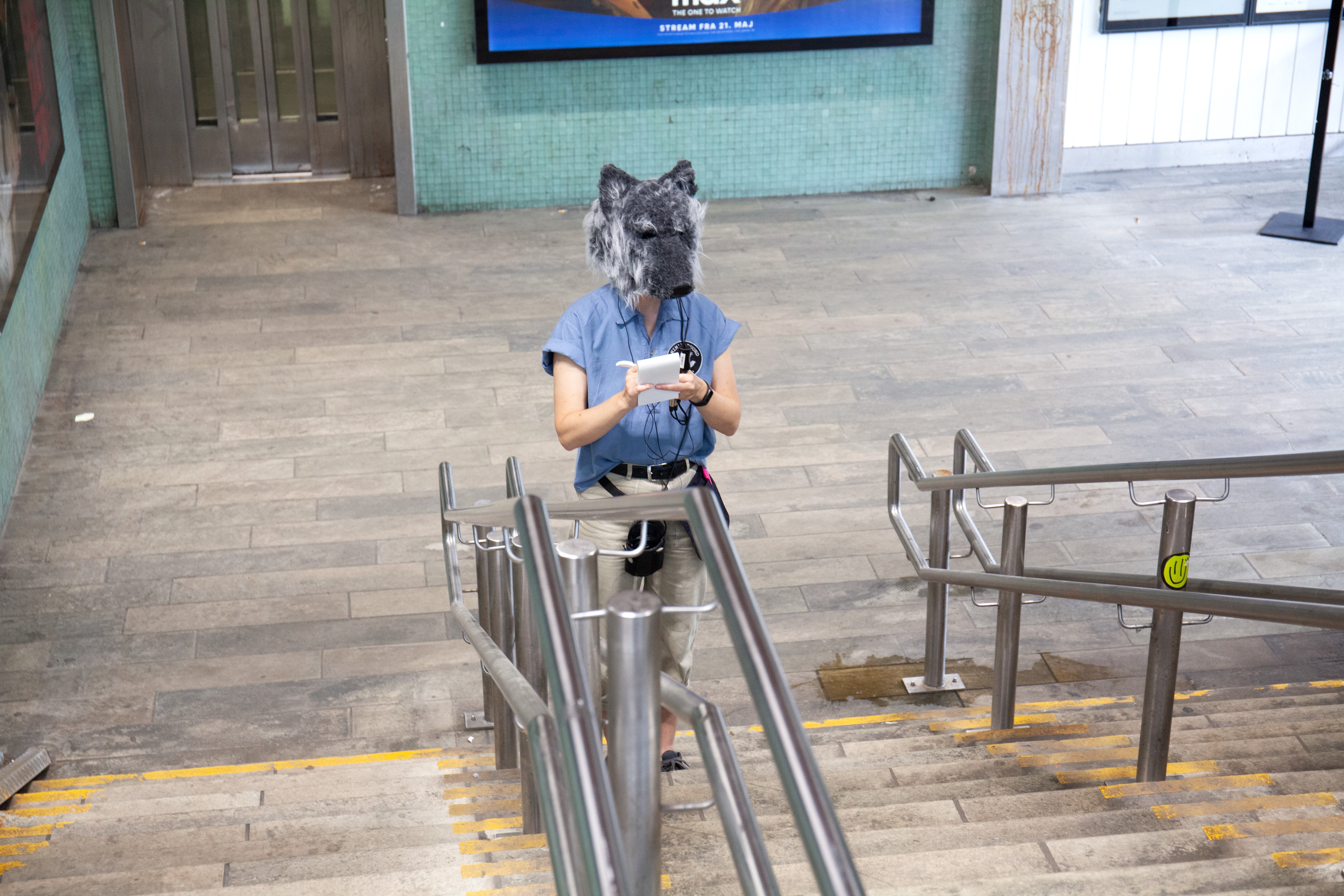
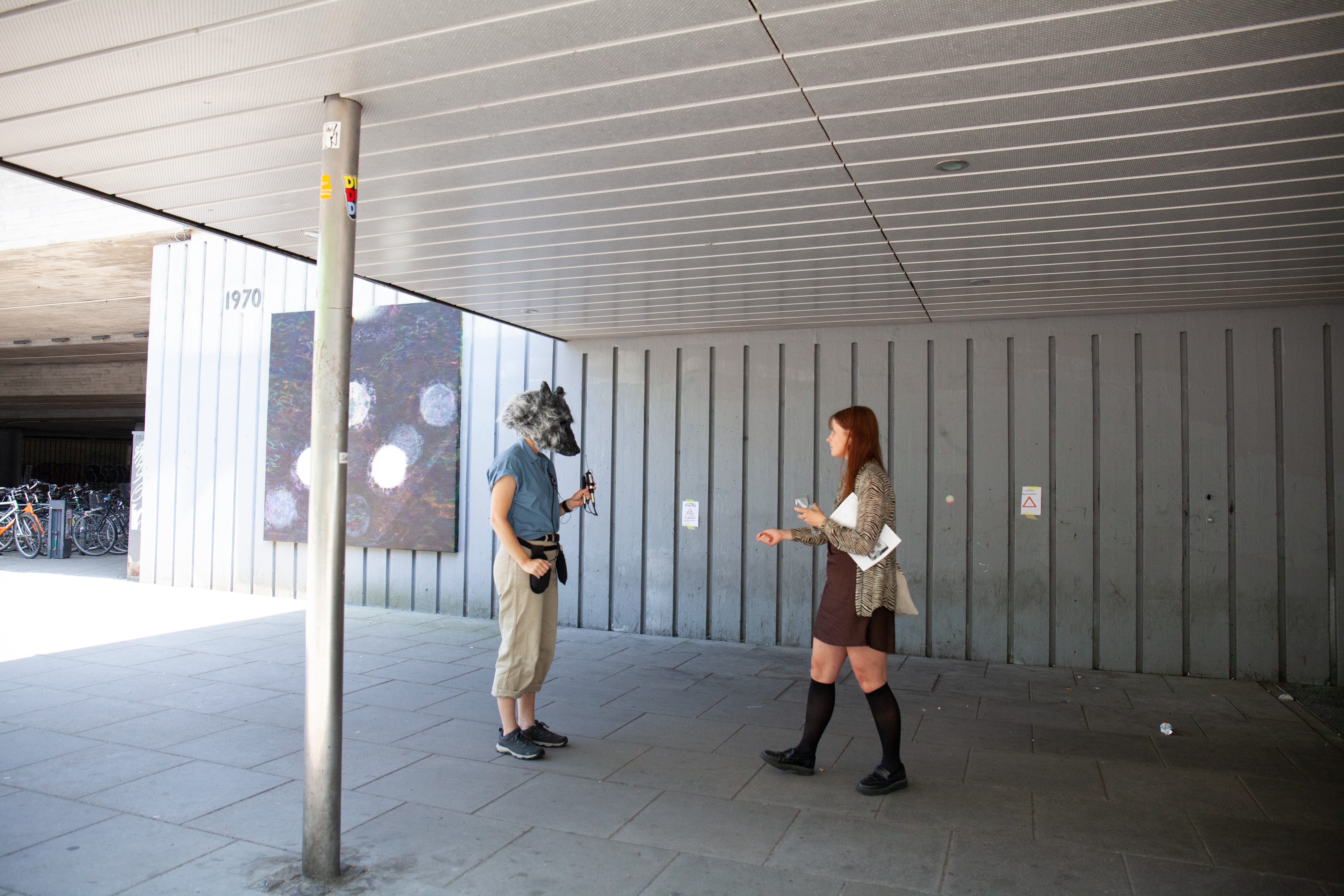
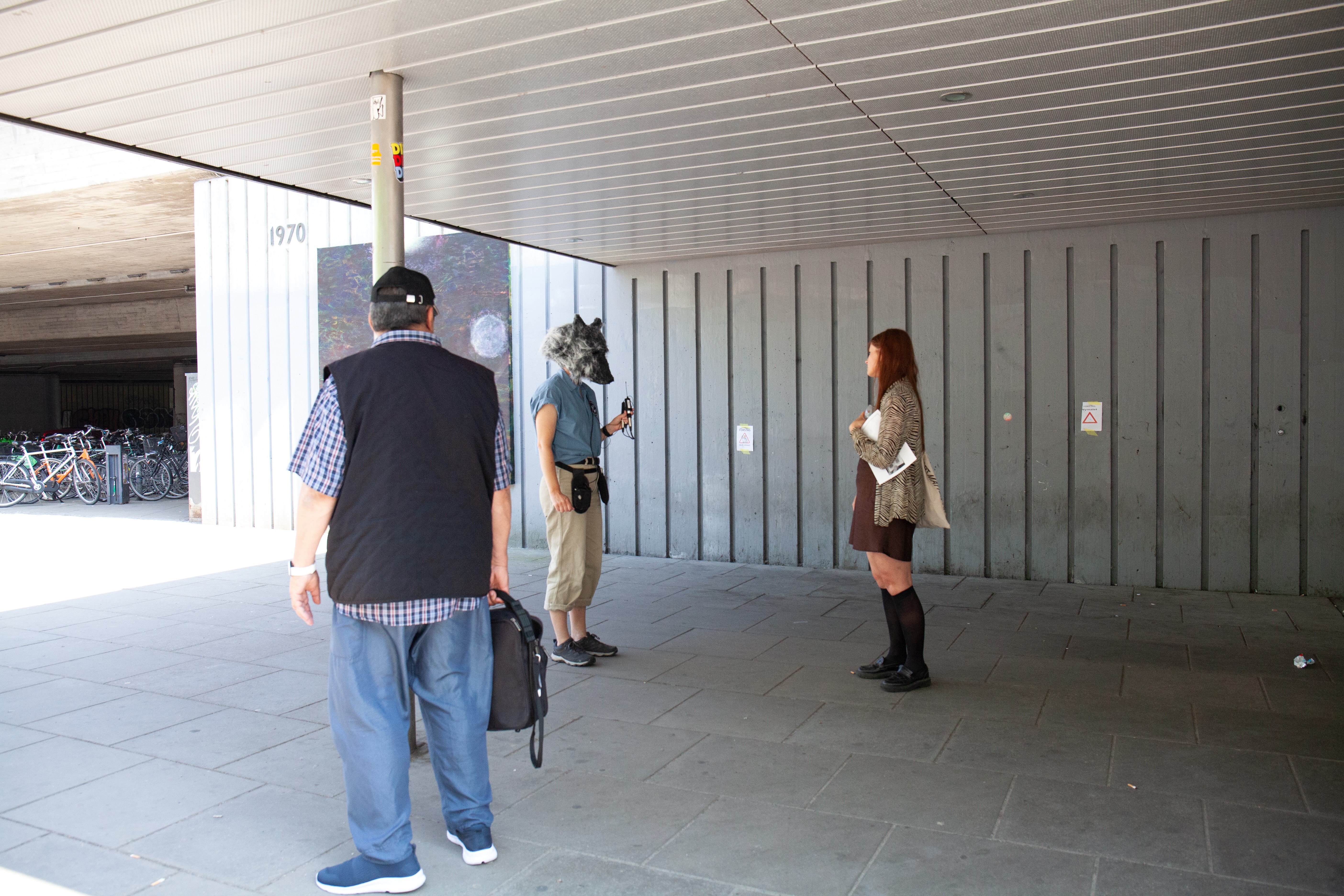
The scientific gaze is a term with negative connotations, implying violence. It exposes the attitude of those who stand behind the recorders. Yet, in its ideal form, the scientific gaze offers us a universal framework, a shared perspective. It is also nobody's perspective. Ideally, the scientific gaze does not only objectify the animals, it objectifies the scientists themselves. The technology of a recorder mimicks the anatomy of a human ear.
And as we learn to instrumentalize our senses, we become more and more like recorders.
When I wear the mask, my gaze becomes the gaze of somebody else, but who? An Other? The Other? People pass me by, rushing to catch a train. A few turn their heads. Children stare and a dog barks at me. I observe, record. A woman stops to look at me for a long time. I look back, and I can see she is almost crying. My body is stiff with tension as it resists to be touched. Am I allowed to be touched?
We must take his obsession with the inside seriously and consider a surveillance system where the recorders are disappearing into our bodies. They don't want to record what we are saying. They want to record what we are hearing.
